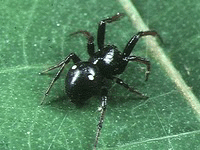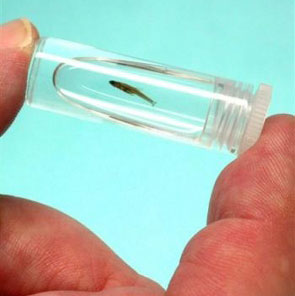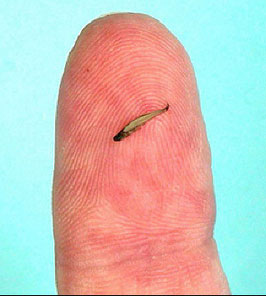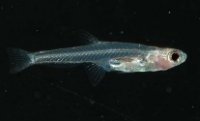At just 2ft 9in, Indian muscleman Aditya 'Romeo' Dev is the world's smallest bodybuilder.
Pint-sized Romeo is well-known in his hometown of Phagwara, India - for his ability to lift 1.5kg dumbbells - despite his overall 9kg body weight.
Every day, crowds flock to the local gym to the see the mini-muscleman in training.
 Mini muscleman: Romeo, pictured with his trainer Ranjeet Pal, weighs just 1 st 6 lbs
Mini muscleman: Romeo, pictured with his trainer Ranjeet Pal, weighs just 1 st 6 lbs
 Muscle man Romeo shows off his moves in the gym
Muscle man Romeo shows off his moves in the gym
Unlike many dwarfs, Romeo is well proportioned, with a head circumference of 15in and a chest measurement of 20in.
Romeo said: "I've been training as a bodybuilder for the last two years and by now I think I must be the strongest dwarf in the world.
"I have always been fit but since I started working out, I have become famous for my strength.
"My size has never stopped me. I train with dumbbells and do aerobics and dance. People are always pleased to see me. I have been invited on TV shows and dance on stage."
 Howzat: Romeo bats away any doubts about his sporting prowess prompted by his size
Howzat: Romeo bats away any doubts about his sporting prowess prompted by his size
His trainer Ranjeet Pal spents hours helping his 19-year-old protege build his small muscles to perfection.
"Because of his small size, I don't assign him hard exercises. But Romeo trains more or less the same as anyone else and he's much more determined.
"When he first started, I insisted he did a month of basic exercises like aerobics, push-ups and basic gymnastics to prepare his body.
 Possibly the strongest dwarf in the world: Romeo and his 1.5kg dumbbells
Possibly the strongest dwarf in the world: Romeo and his 1.5kg dumbbells
"After that, I made lightweight dumbbells and taught him basic weight-lifting exercises to shape his biceps and triceps. His size and his weight were taken care of so that he never hurt himself."
Determined Romeo is hoping to have an entertainment career after performing in many local TV shows.
He said: "I earn good money through my dance and bodybuilding shows but being rich doesn't interest me.
"My dream is to travel a lot - I want to perform in London with my idol, Jazzy-B."
 Big dreamer: Romeo hopes to become a famous star both in India and abroad
Big dreamer: Romeo hopes to become a famous star both in India and abroad
Weight lifter: Romeo lifts 1.5kg weights every day



 Physicists at the nano imaging laboratory of Simon Fraser University in Canada have created a 0.07mm x 0.10mm book using a focused-gallium-ion beam.
Physicists at the nano imaging laboratory of Simon Fraser University in Canada have created a 0.07mm x 0.10mm book using a focused-gallium-ion beam.
















 Muscle man Romeo shows off his moves in the gym
Muscle man Romeo shows off his moves in the gym Howzat: Romeo bats away any doubts about his sporting prowess prompted by his size
Howzat: Romeo bats away any doubts about his sporting prowess prompted by his size Possibly the strongest dwarf in the world: Romeo and his 1.5kg dumbbells
Possibly the strongest dwarf in the world: Romeo and his 1.5kg dumbbells
